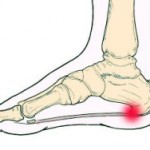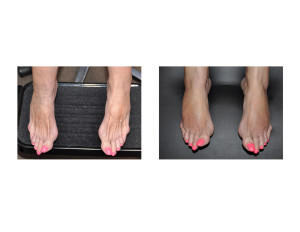
While the use of steroid injections and plantar fasciotomies are reported to have fairly high success rates, they are not complication free. Steroids are well known to cause soft tissue atrophy with repeated use or high dose injections. Plantar fasciotomies have the potential to cause flattening of the arch and heel numbness as well as rupture of the plantar fascia.
Fat pad atrophy is being recognized as a leading contributor to heel and ball of the foot chronic pain in some patients. The heel as well as the ball of the foot have specific fat pads that are separated and encased by fibrous bands. They help to absorb the shock on the foot bones that naturally occurs from walking and running. Thus the logic of good athletic foot wear with shock absorbing materials. But should the heel fad pad become thin or even mostly lost, pain will develop with the surface of the bones as well as the tendons and nerves now more exposed to being compressed between the bones and the surfaces that the bottom of the foot contacts. High levels of repetitive activity from running or cycling or overuse of steroid injections to treat chronic foot pain are common sources of fat pad atrophy. Diabetic, overweight and older patients are especially prone to fat pad atrophy
With the widespread use of injection fat grafting today, it is no surprise that such transplantation into the foot to treat chronic pain from fat pad atrophy was inevitable. Like everywhere else in the body where it is used, the appeal of using your own tissues and the allure of its stem cells make foot fat grafting a logical treatment option. The placement of concentrated fat, usually harvested from the abdomen or thighs, using small blunt-tipped cannulas makes injecting into the foot incisionless and fairly risk free.
The heels and balls of the feet are unique places to inject fat, not only because of the tight tissue spaces, but because of the compressive forces that it will be exposed to after surgery. Fat usually takes up to six weeks after surgery to determine how much survives. So avoiding athletic activities like running and cycling, high heels and long standing times should be avoided during the first month after surgery. Not all injected fat survives after any injection treatment but avoiding excessive trauma to the fat cells during the early transplantation period seems logical.

Dr. Barry Eppley
Indianapolis, Indiana


